I love walking tours in Los Angeles and try to do as many as I can. The Los Angeles Conservancy offers several so I signed up for their Angeleno Heights Victorian Homes walking tour to take a look at some of the oldest remaining homes in Los Angeles. It was a rare rainy day, but that didn’t stop us, even though I had to fight raindrops dripping on my camera lens.
Find more things to do and where to stay near Angeleno Heights, here.
Angeleno Heights is east of Echo Park not far from Downtown LA and our group met at the old firehouse on Edgeware Road. Our guide mentioned that even though the firehouse is no longer in operation, there are several vintage fire trucks stored inside.
We walked up Edgeware Road toward the historic neighborhood and saw some of the old homes on the street. The neighborhood was developed in 1886 by William W. Stilson and Everett E. Hall and was an affluent “suburb” within sight of downtown. The first streetcar line in Los Angeles stopped there making it easy for residents to travel back and forth.
Carroll Avenue
Many of Carroll Avenue’s original Victorian homes have been preserved as well as some that were moved there from other parts of the city. All the utility lines are buried underground to give the street more of a sense of old Los Angeles.
Most of the homes were built in the Queen Anne style but you can also see Pre-Victorian, as well as early 19th-century Craftsman bungalows. A few hitching posts and raised platforms on the sidewalk remain as remnants of the days of horse-drawn carriages.
Although the neighborhood was affluent in its heyday, it fell into disrepair after residents moved West to other parts of the city. Preservationists rediscovered the area in the late 1960s and began restoring some of the homes. There are now 800 structures spanning 120 acres.
The Libby House
The Libby house (1887), on Edgeware Road, is owned by a woman who asked that we not post any photos of her home’s interior on the web. She said that she enjoys talking about her house with each month’s tour group and has an amazing view of Downtown Los Angeles from her backyard.
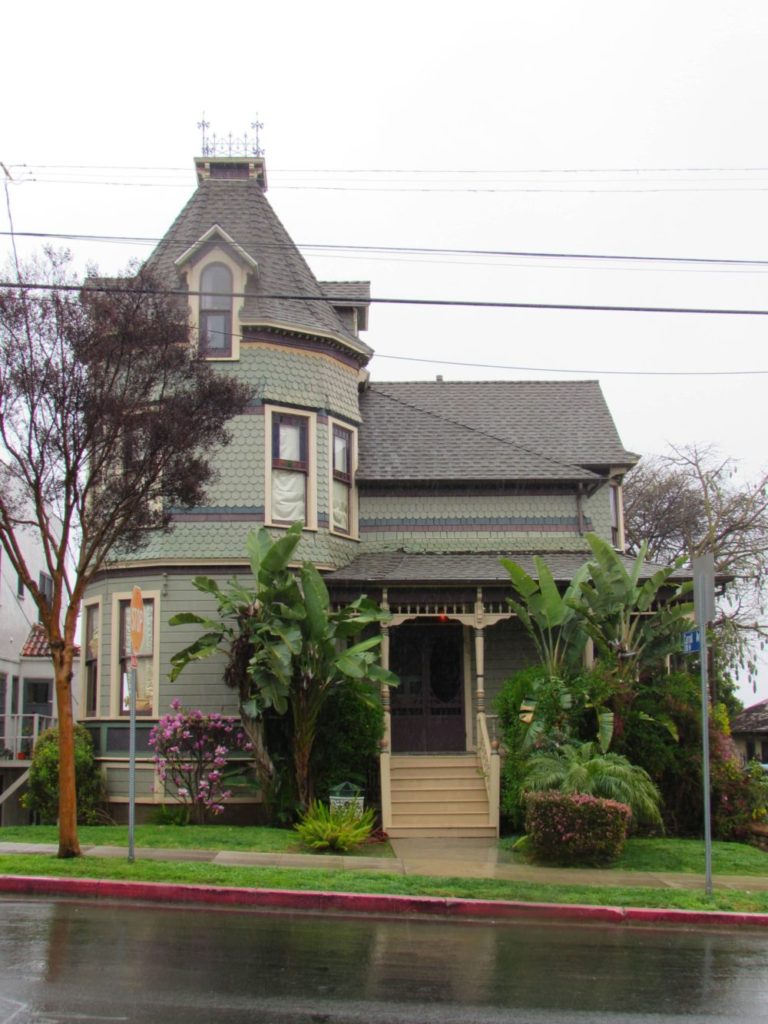
Like many of these older homes, the Libby House has a carriage house in the back. Others have been converted into rental units.
The Foy House
The Foy House is the oldest home on Carroll Avenue and is Pre-Victorian. It was built Downtown in 1872 in the Italian style and was moved twice before settling in Angeleno Heights. One of its former residents was Mary Foy, who was L.A.’s chief librarian and a leader in the women’s suffragette movement.
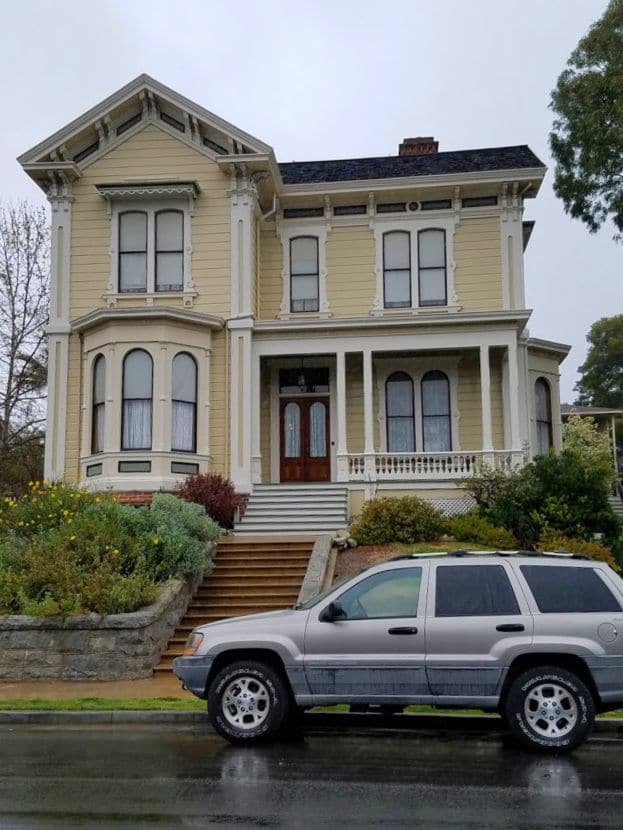
The Innes House
As can be expected in the city of dreams, several of the homes are used for filming. The Innes House was built in 1887 and was Halliwell Manor in the TV show “Charmed.”
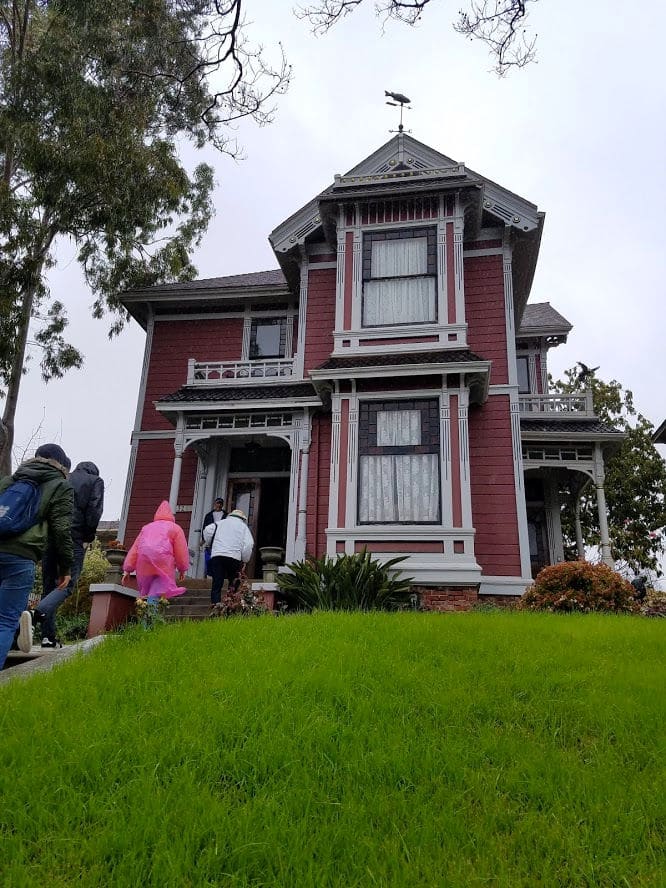
We were able to walk inside it. The first floor is decorated with authentic Victorian Era furniture, lighting fixtures, doors, and windows.
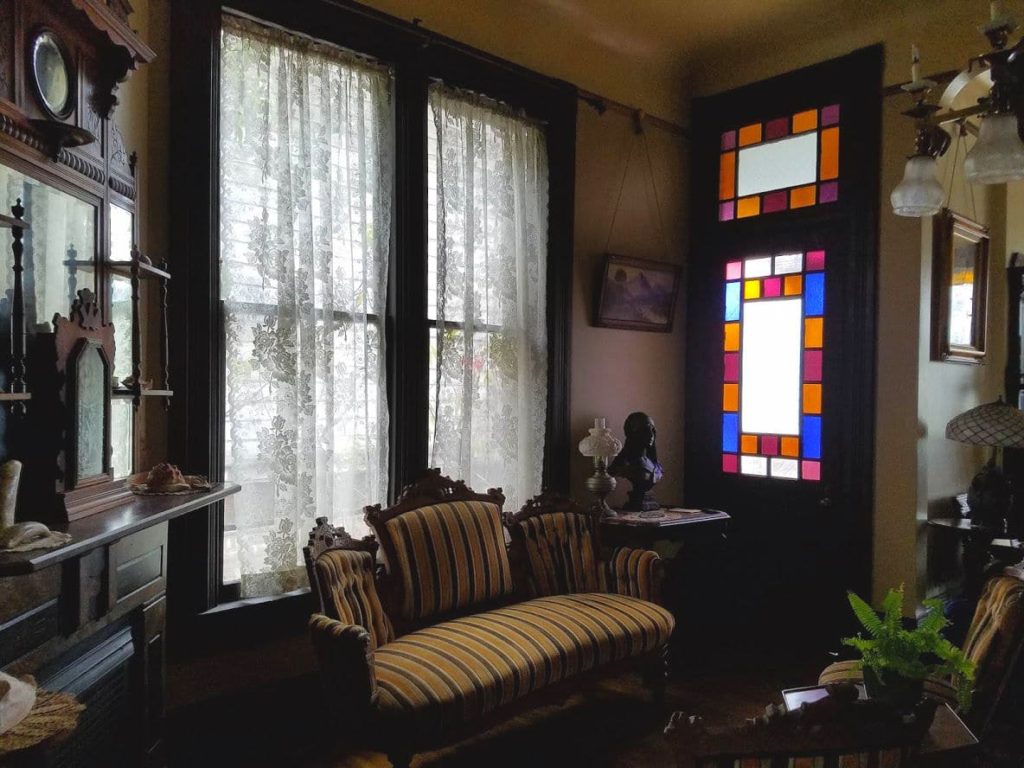
The Sanders House
The slightly dilapidated Sanders House, built in 1887, was used during the filming of Michael Jackson’s “Thriller.”
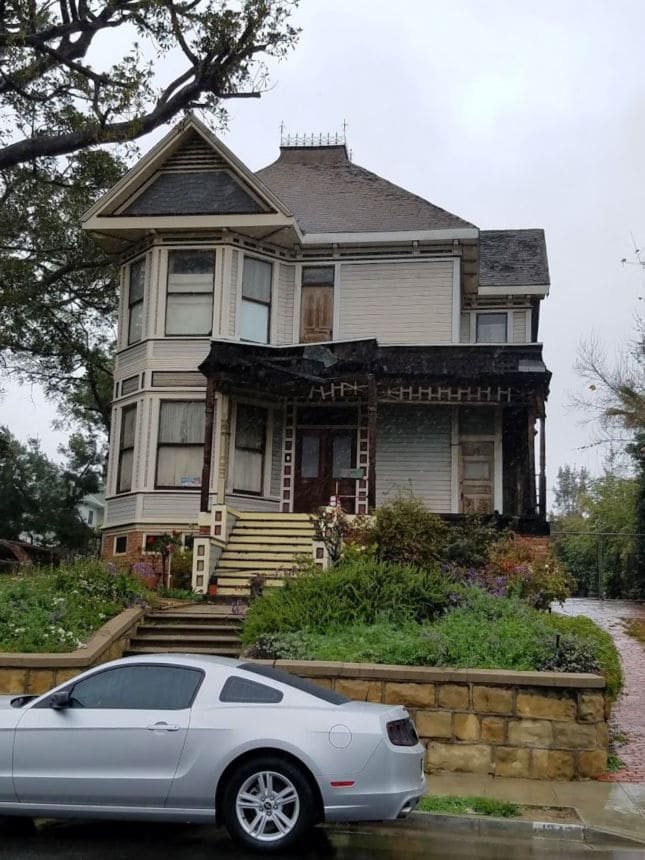
The Luckenbach House
The Luckenbach House was built in 1888 and has an interesting history. It was originally constructed for James S. Luckenbach who was a businessman but was sold to philanthropist Kaspare Cohn. Cohn donated it to the Hebrew Benevolent Society in 1902 and it became the Kaspare Cohn Hospital. The building was the first official Jewish hospital in Los Angeles. Dr. Sarah Vasen was the first female doctor in Los Angeles from 1906 to 1910 and acted as superintendent.
The hospital relocated to Boyle Heights in 1910, which had the largest Jewish community in Los Angeles at the time. It relocated again in 1930 to Fountain Ave and was renamed Cedars of Lebanon.
The Mt Sinai Hospital for Incurables in Boyle Heights also moved West. The two hospitals merged in 1961 forming the prestigious Cedars-Sinai Medical Center near Beverly Hills. The Luckenbach house can be seen on a mural on the side of Canter’s Deli in the Fairfax district of Los Angeles.
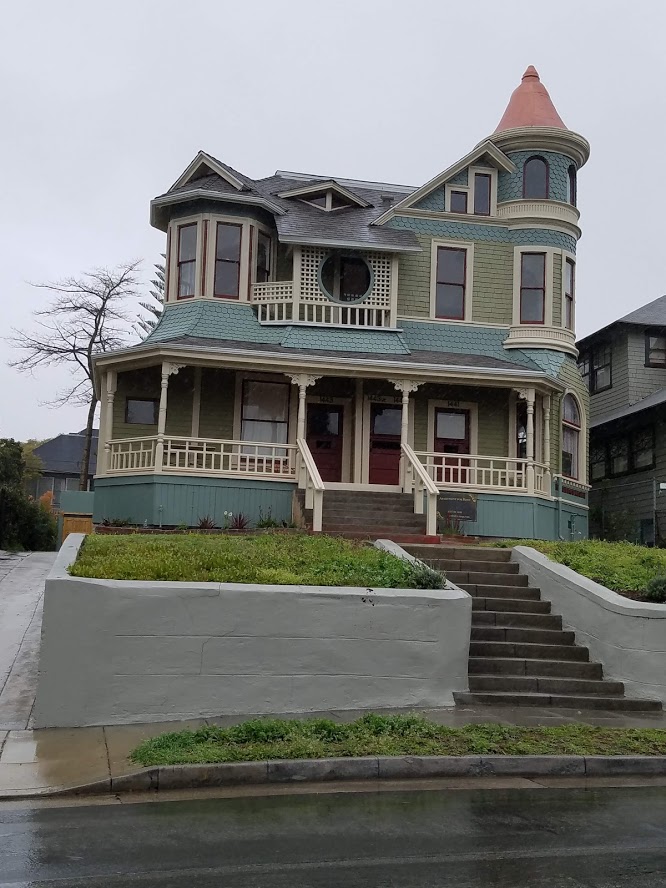
The Pinney House
The Pinney House was built in 1887 for industrialist Henry L. Pinney. He lived in the house until his death in 1980 at age 106. Having lived there for over a century, Pinney had many stories to tell. You may recognize this house from a brothel scene in the TV show “Madmen.”
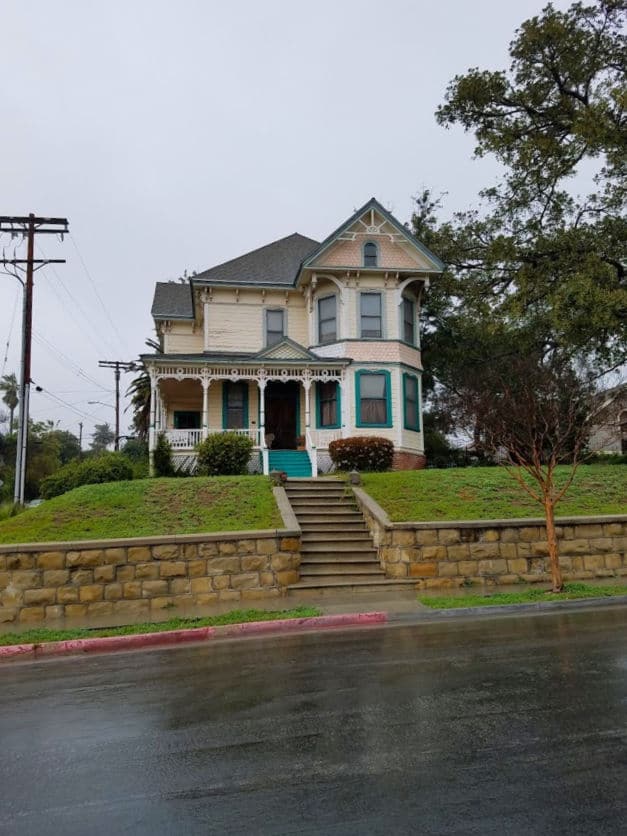
The Beaudry House
I love the detailed work and windows that decorate the Beaudry House which was built in 1885.
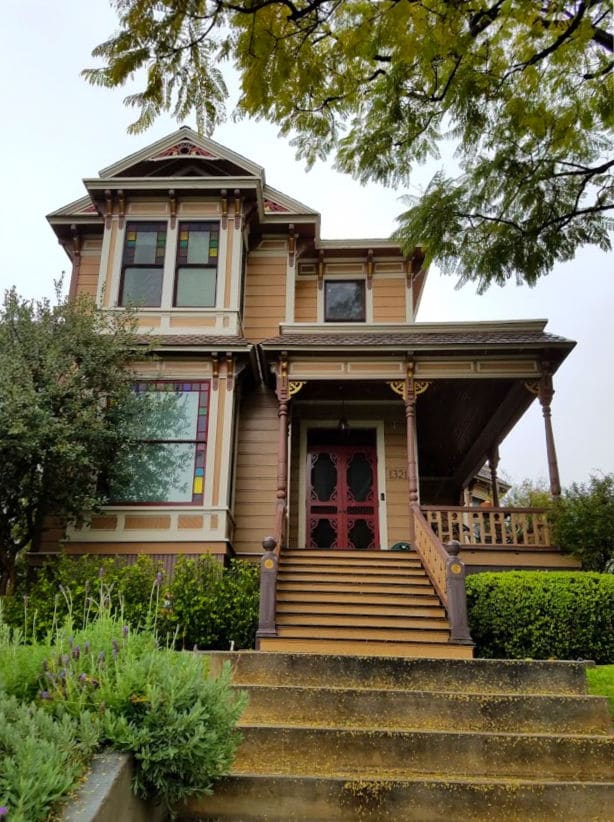
Other homes we passed by on the Angeleno Heights walking tour
Please click on the images to view full-size
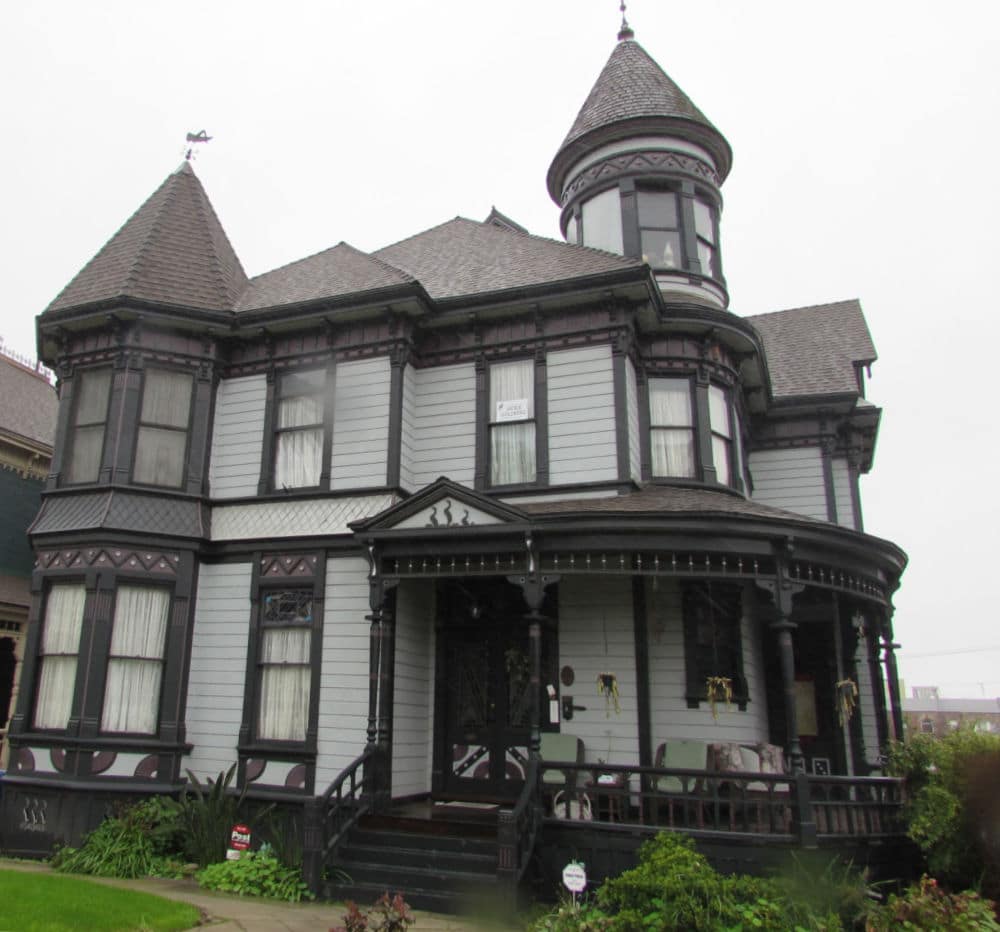
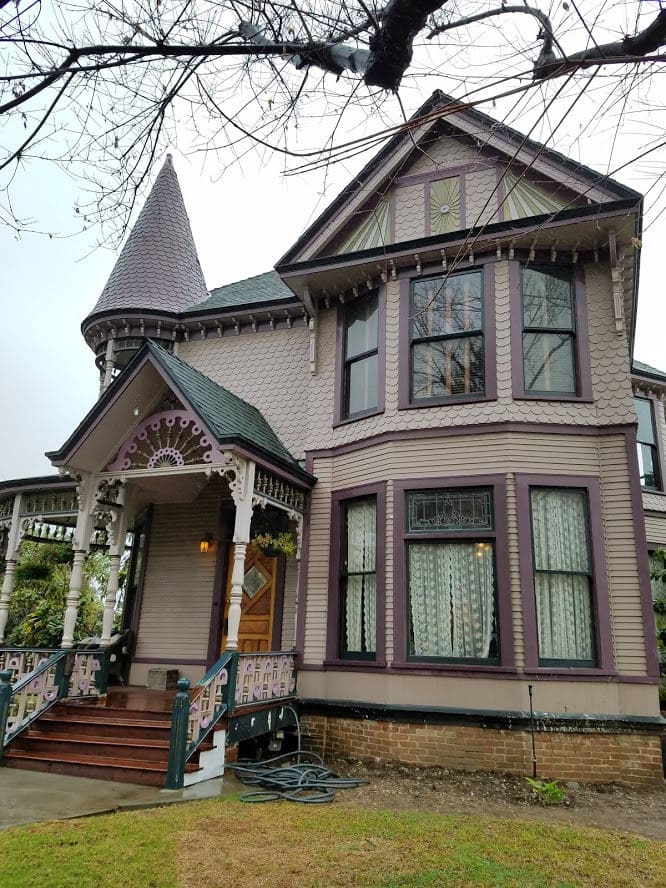
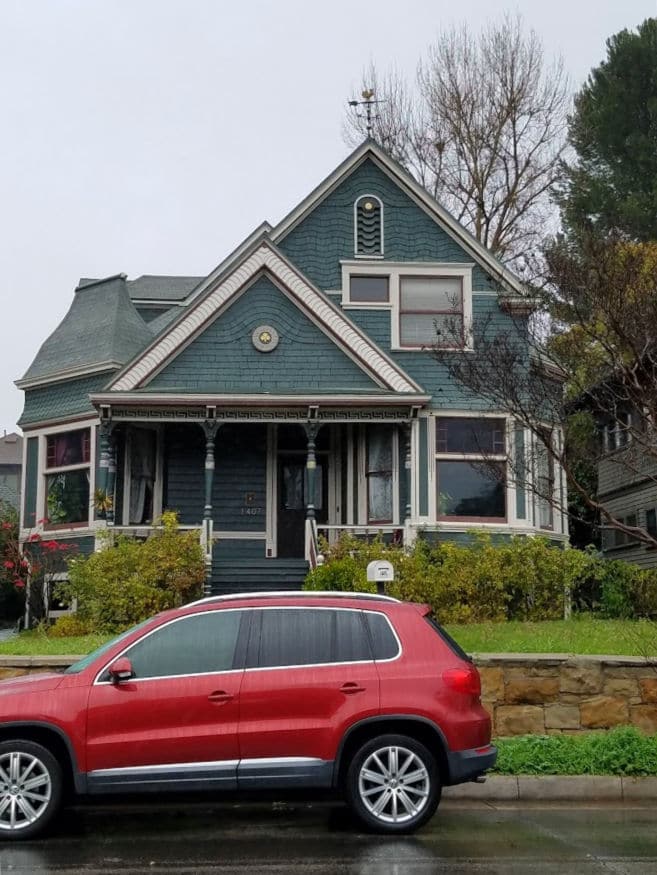
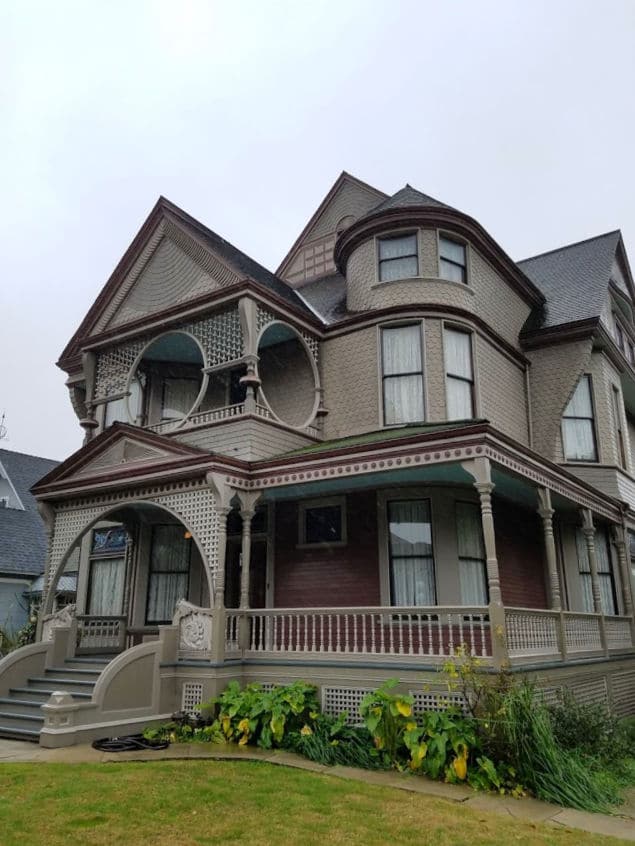
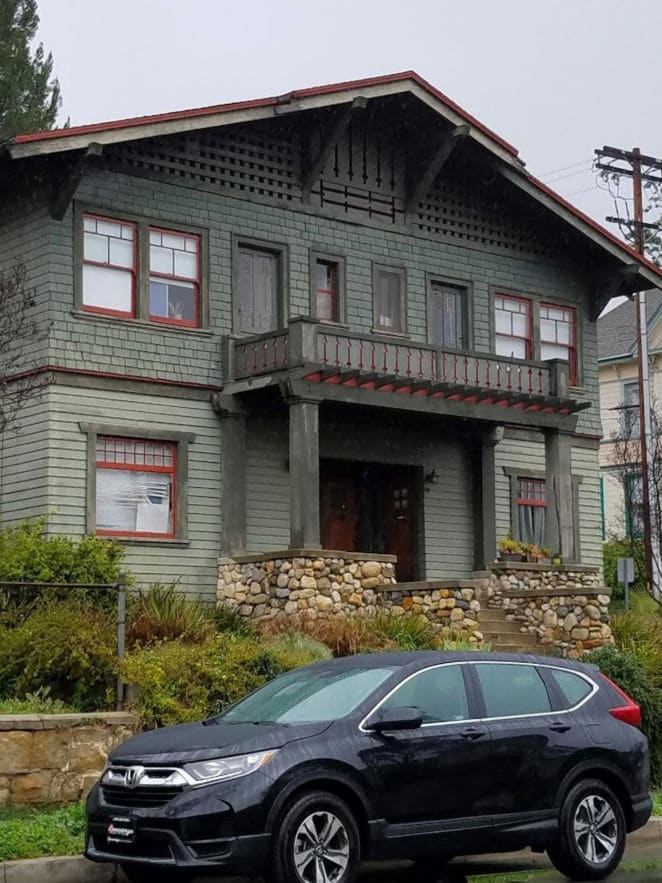
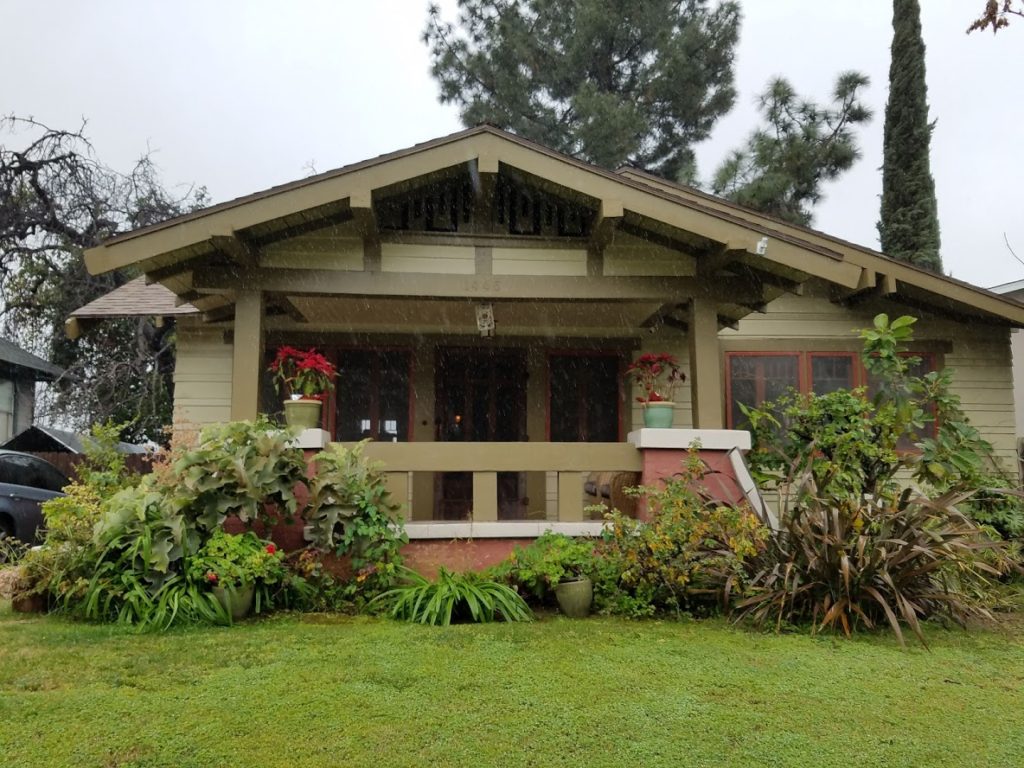
Most of the homes on Carroll Street have been carefully preserved and renovated but there were a few that have endured horrid redecorating attempts. One was a Craftsman that had been stuccoed on the outside. I’m sure preservationists would give it a resounding UGH!
The community surrounding Carroll Avenue is mostly low-income and regentrification has caused the prices of the Victorian homes there to rise. However, the street is a popular gathering place during Halloween, which is no surprise as the entire neighborhood goes all-out spooky!
To book a tour of the Angeleno Heights Victorian Homes, visit the LA Conservancy website.

What a fun tour. I love that you have a monthly mission and are sharing with your readers. Too bad, for pictures there are cars parked in front but then again that means these are vital homes with occupants and of course I bet few have driveways or garages!
You’re absolutely right about that Haralee. The residents live there and they aren’t just for show. Cars and road signs can’t be avoided. At least all the utility lines are underground on Carroll Avenue. That helped.
Thank you, I love seeing all these amazing homes. I have always been in love with old grey Victorians and then the painted ladies too. It’s so funny to see all of
your photos with the houses IN THE RAIN. A new trend for this Californian. We’ve had so much rain my garden plants are soggy.
Thanks, Beth. It took a while before I could plug my phone in to charge because it kept saying it was too wet. It was hard keeping the raindrops off my camera even with a baggie, but somehow I managed.
Great article. Andrew Thornburg 1316 Carroll Avenue Founding Director Carroll Avenue Restoration Foundation. 45 year resident.
One small correction. The legal name of the historic district is Angeleno Heights. Forty years ago in a filing for National Register Status Angelino was used in error.
Thanks so much Andrew! I’m glad you like the post and I appreciate the correction. I will make the changes.